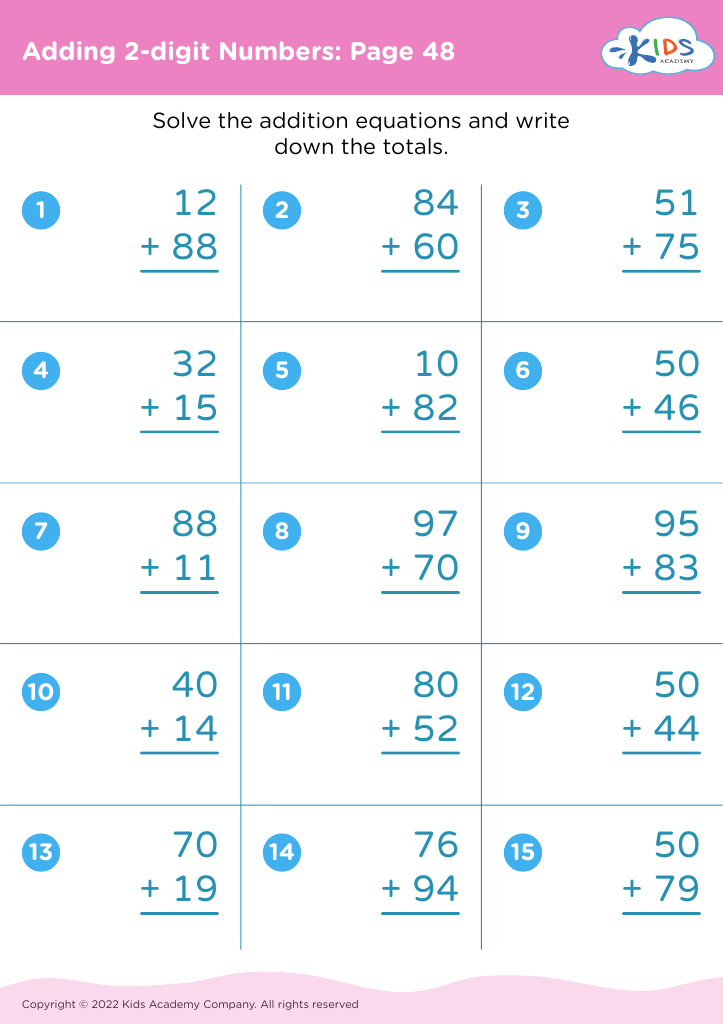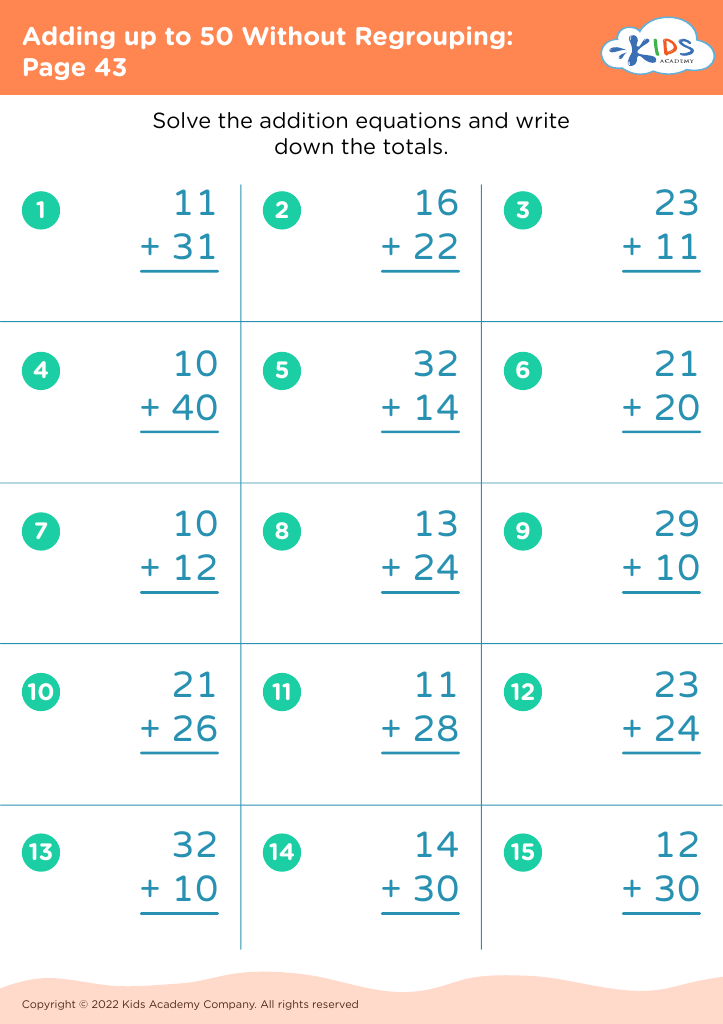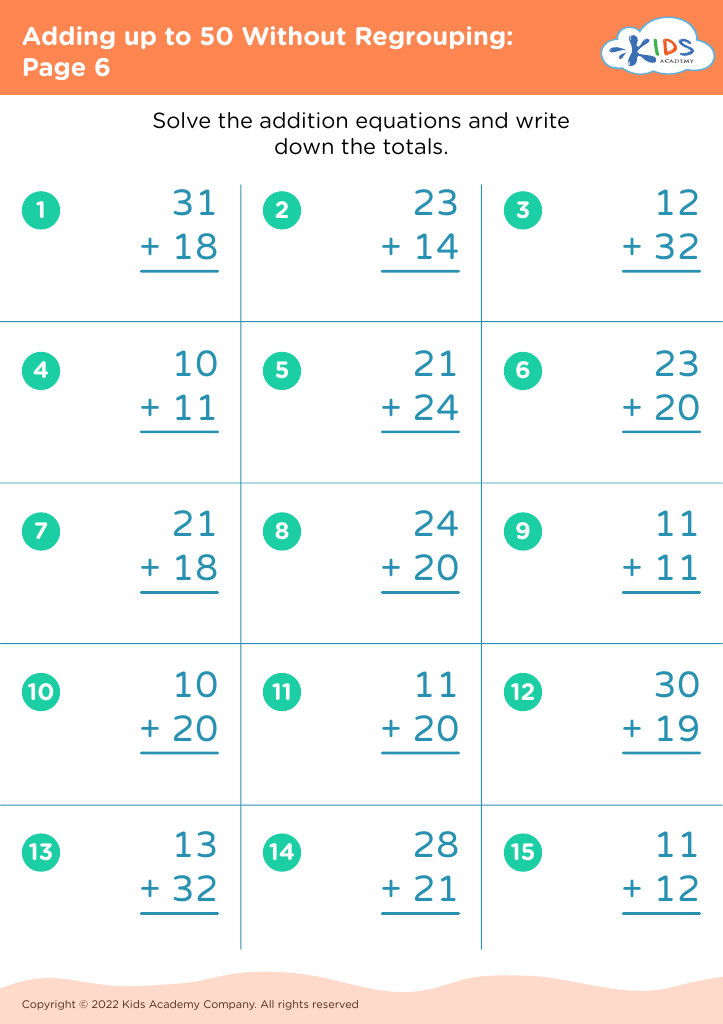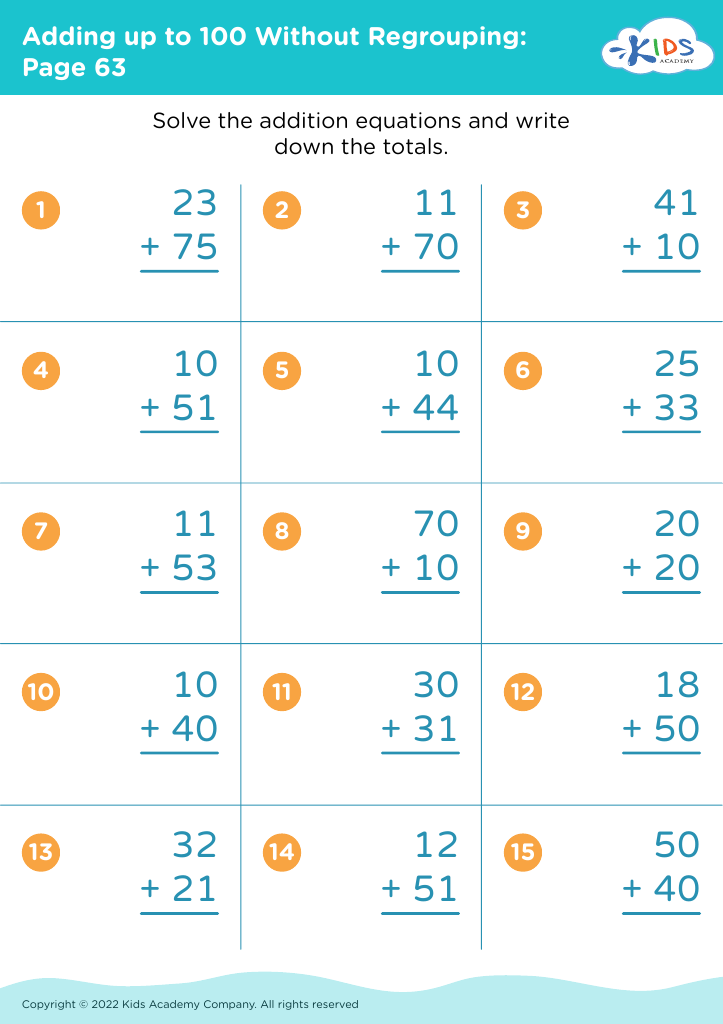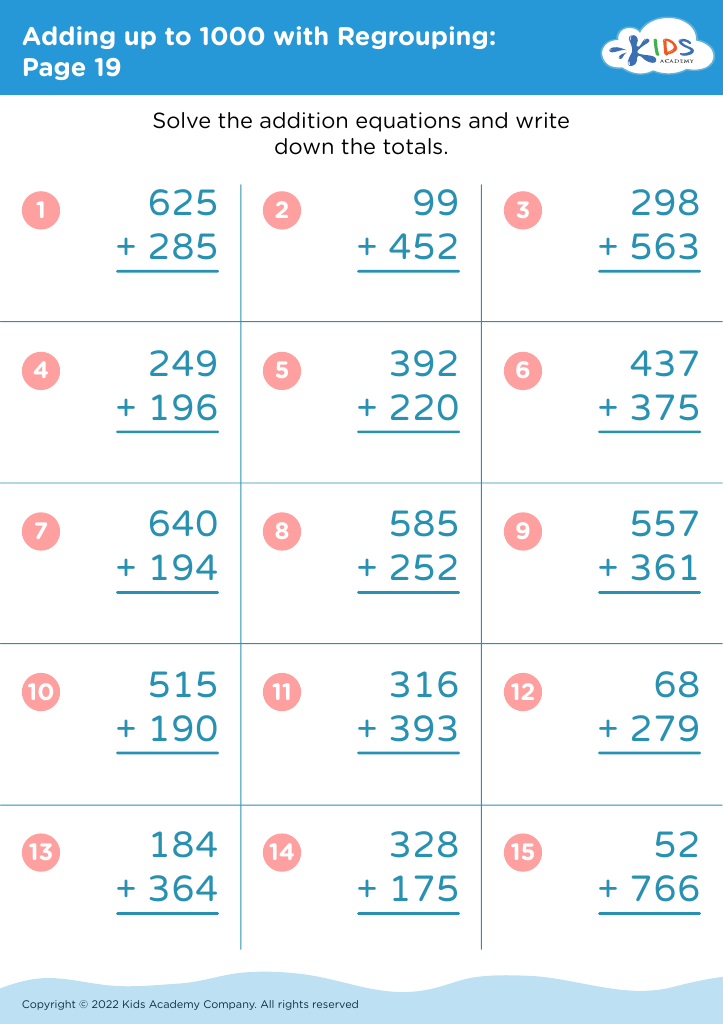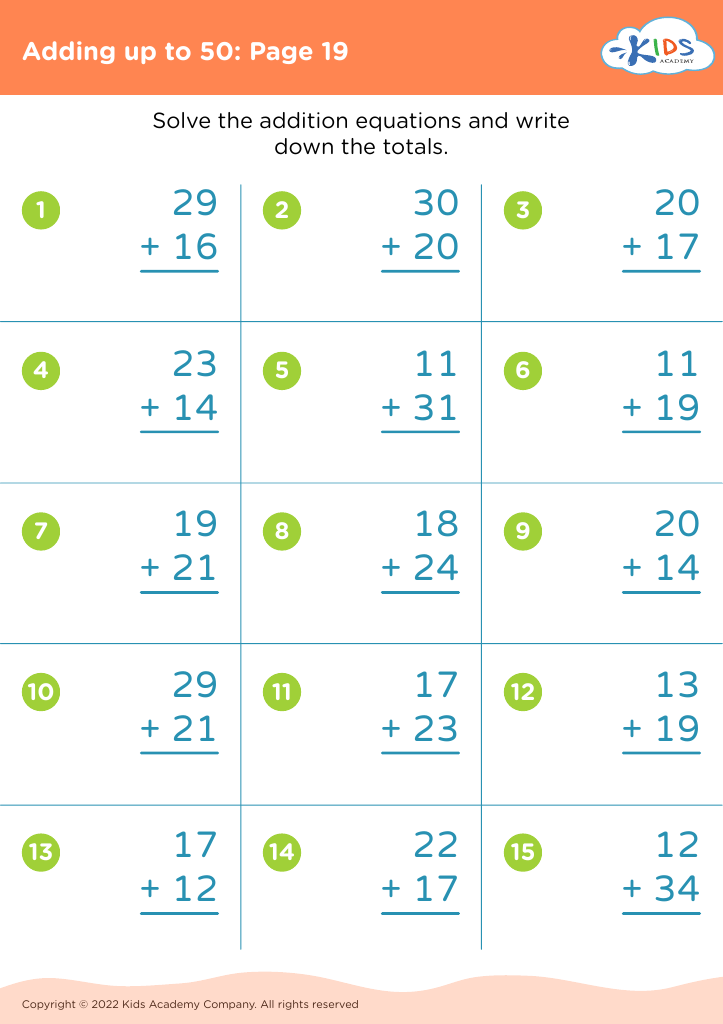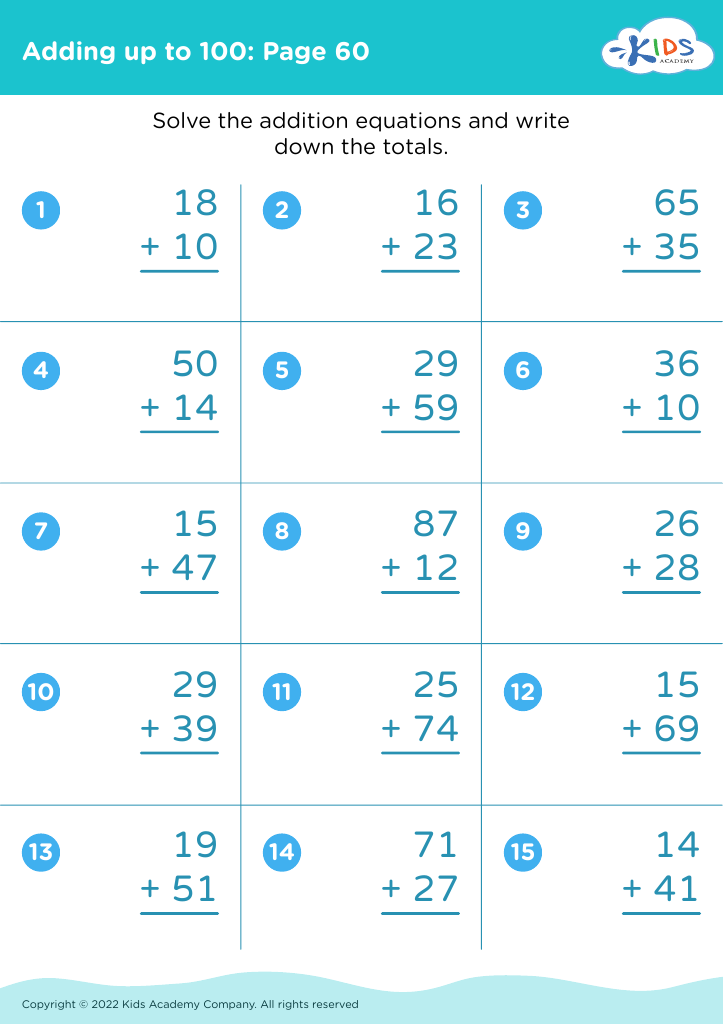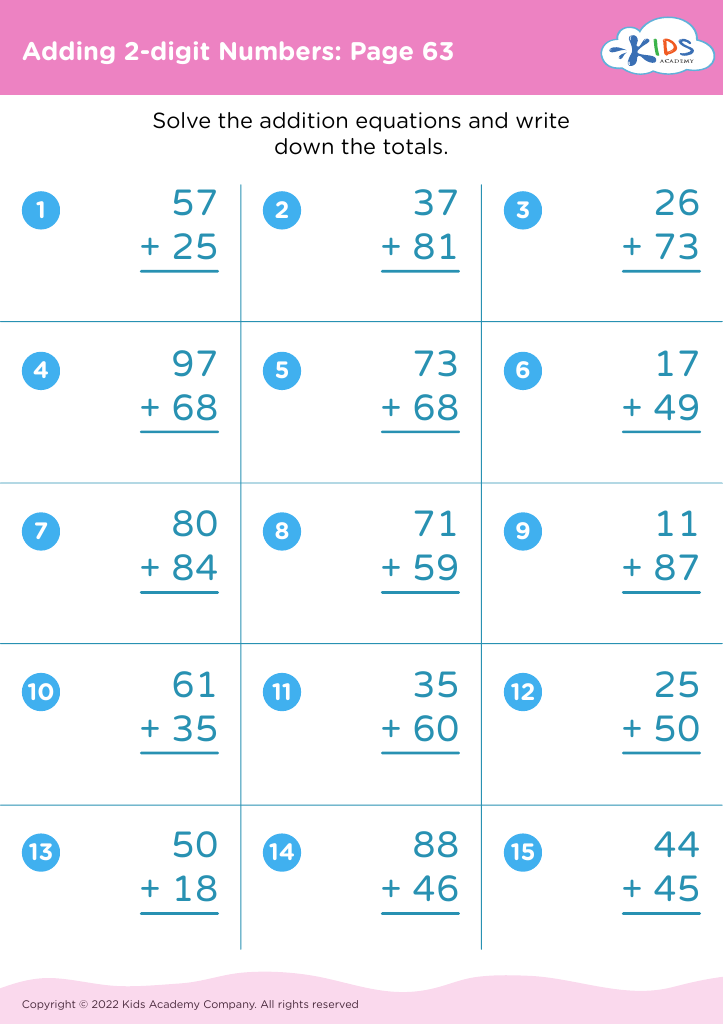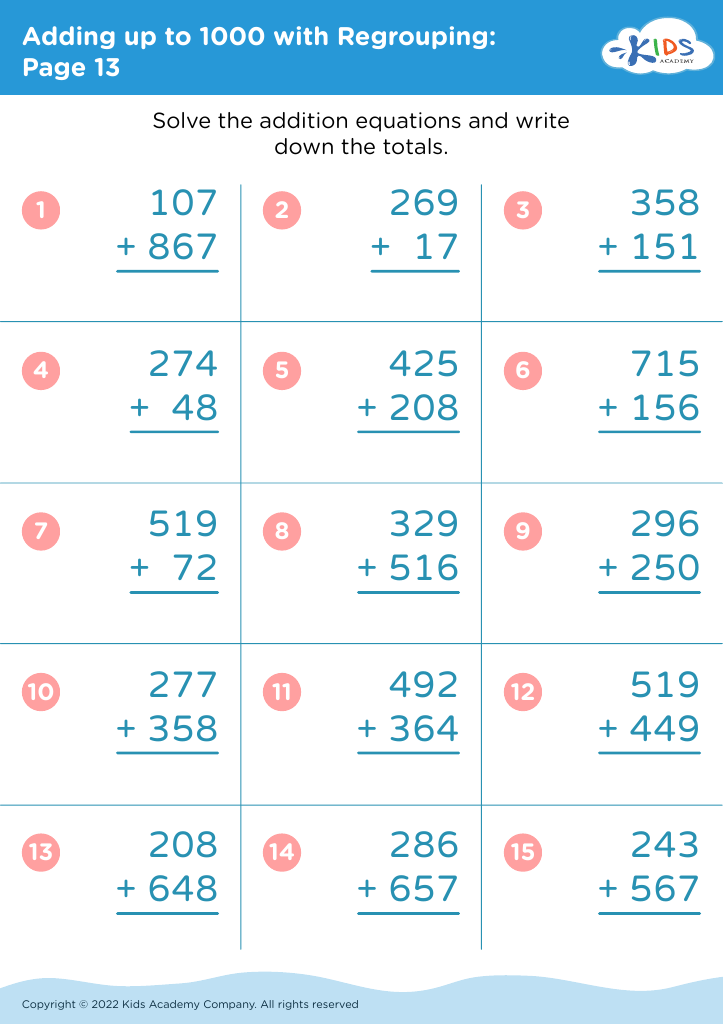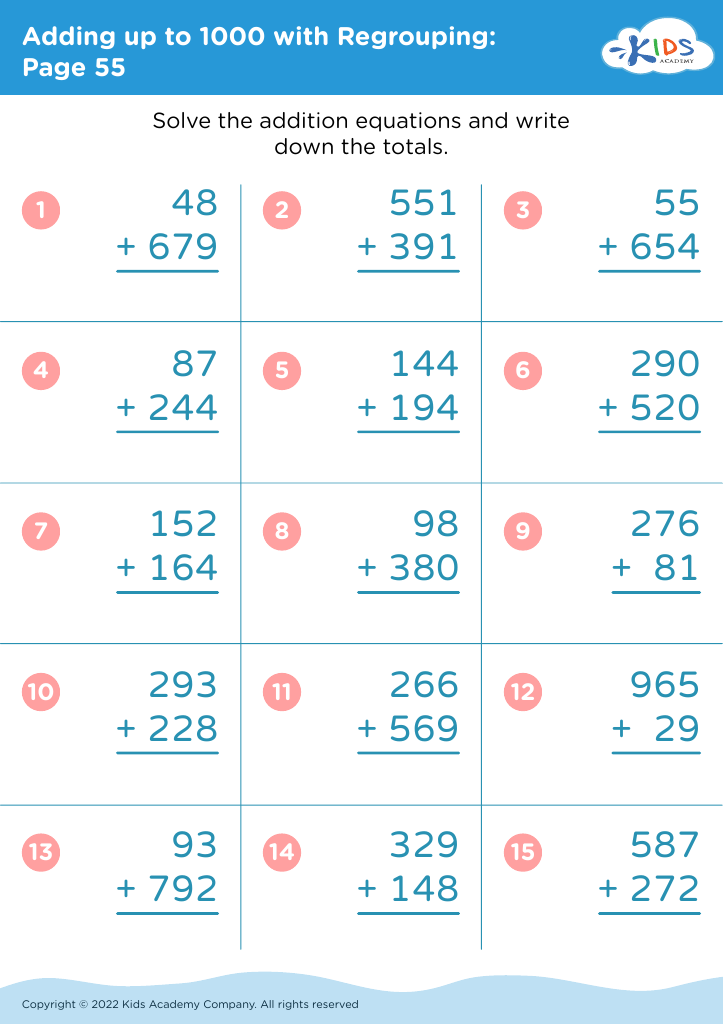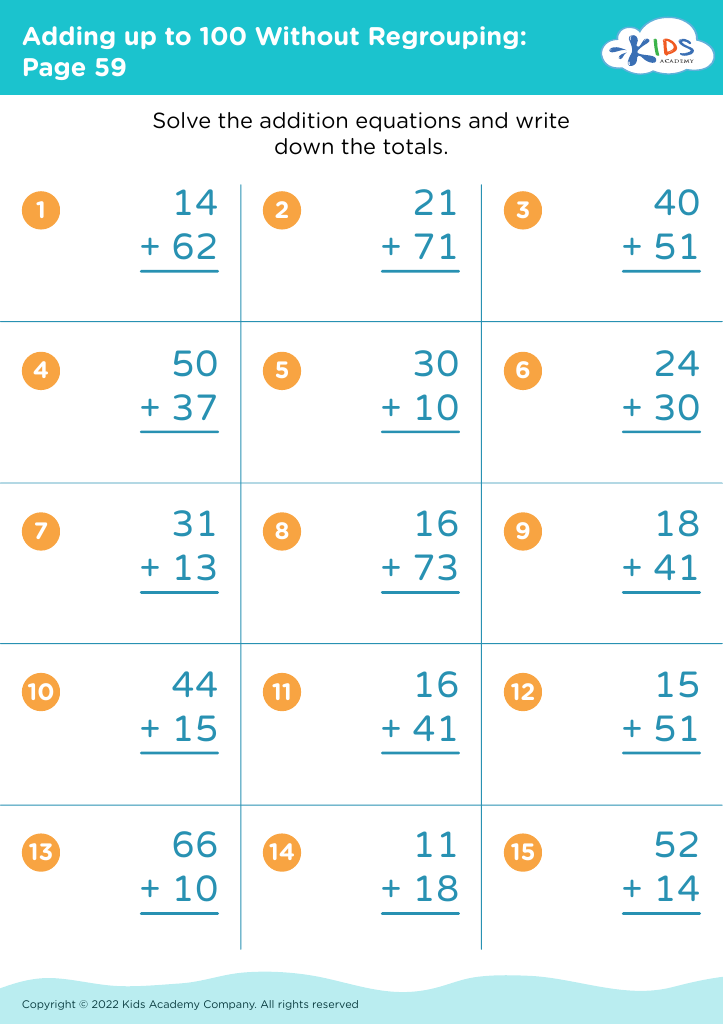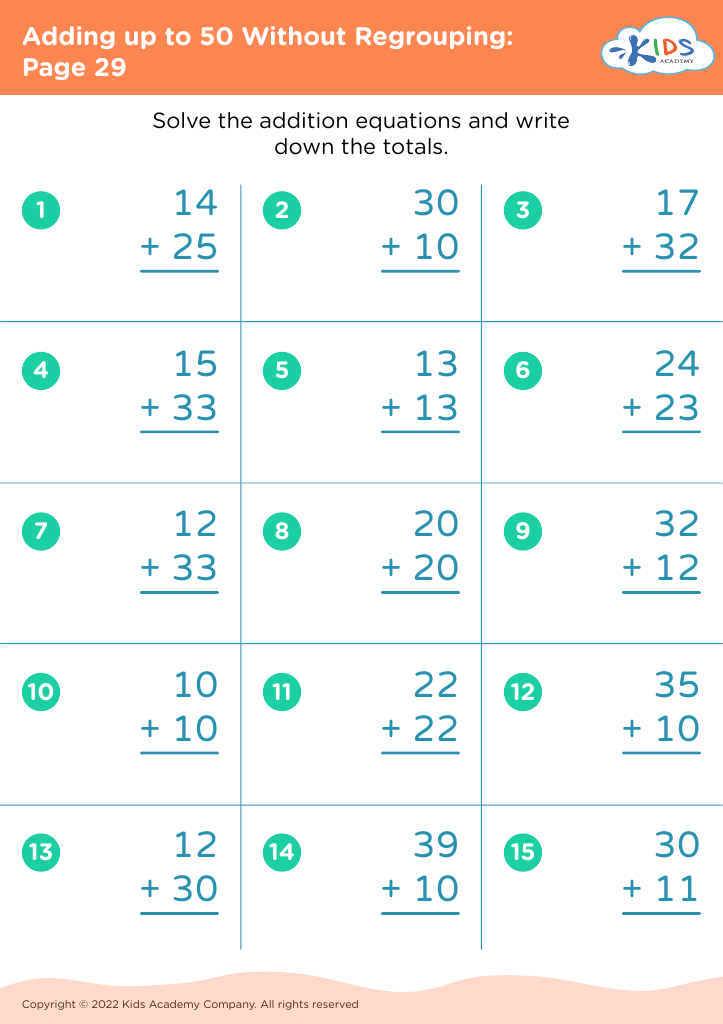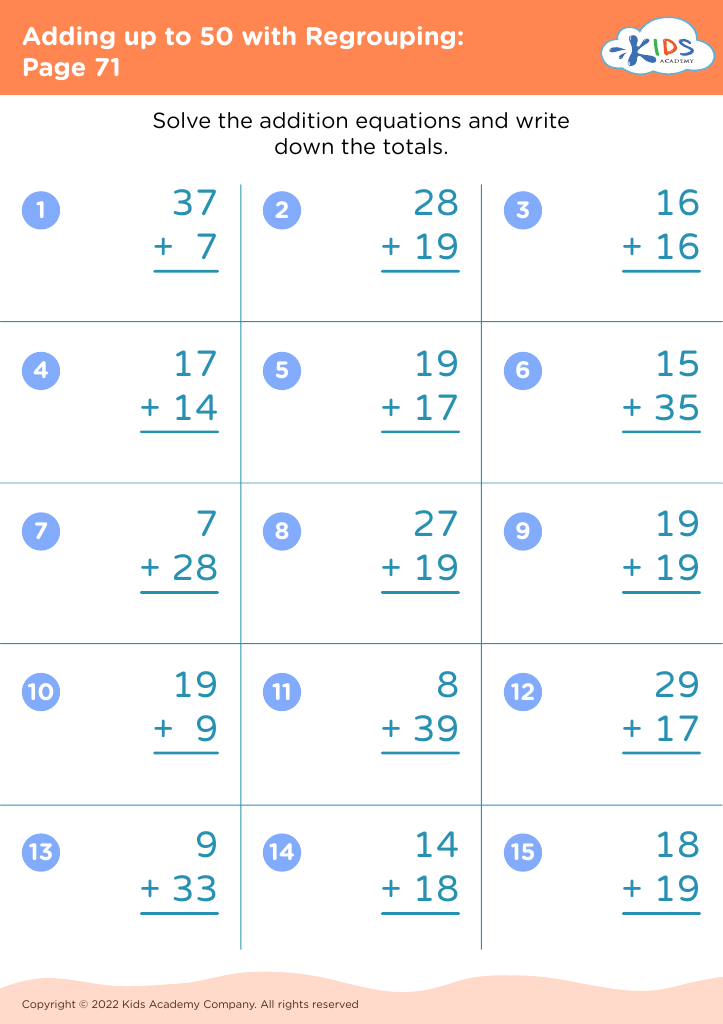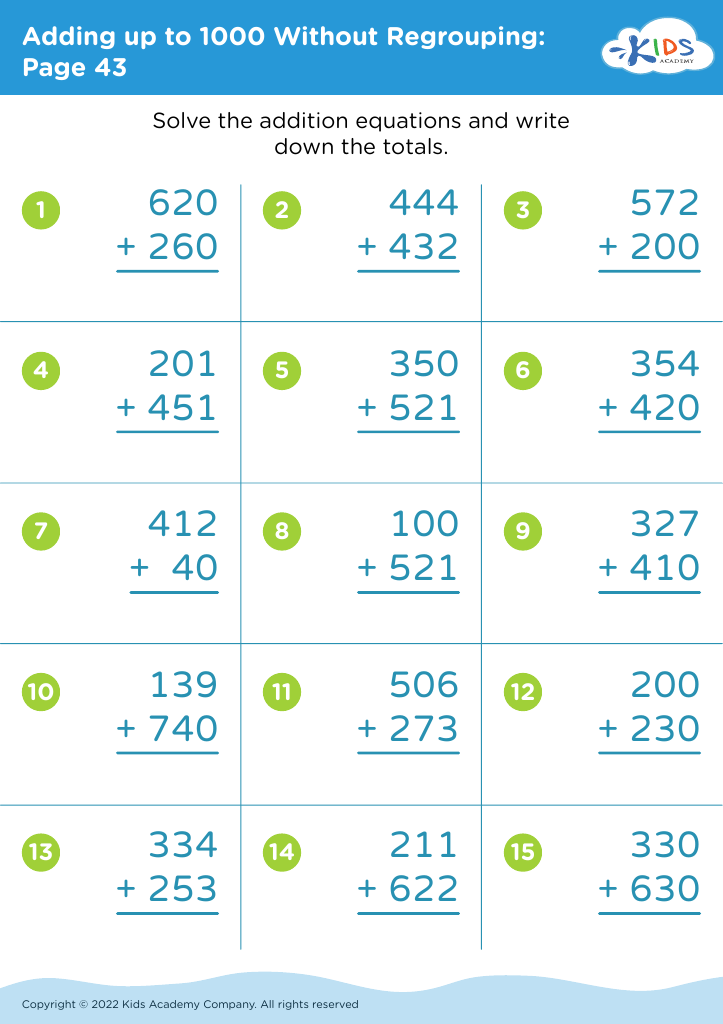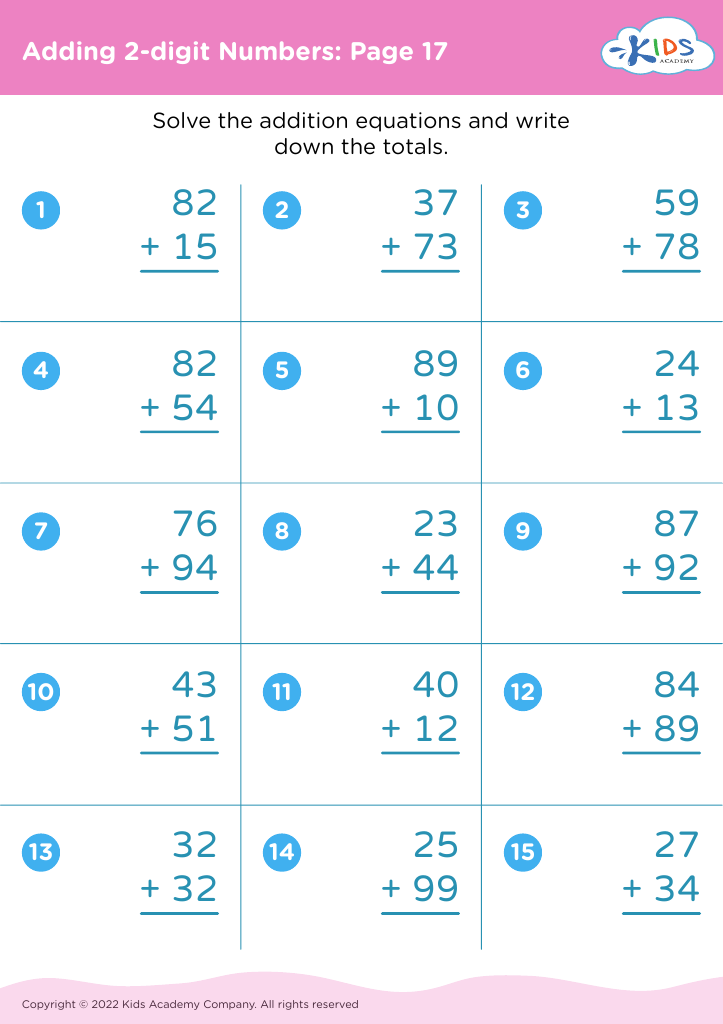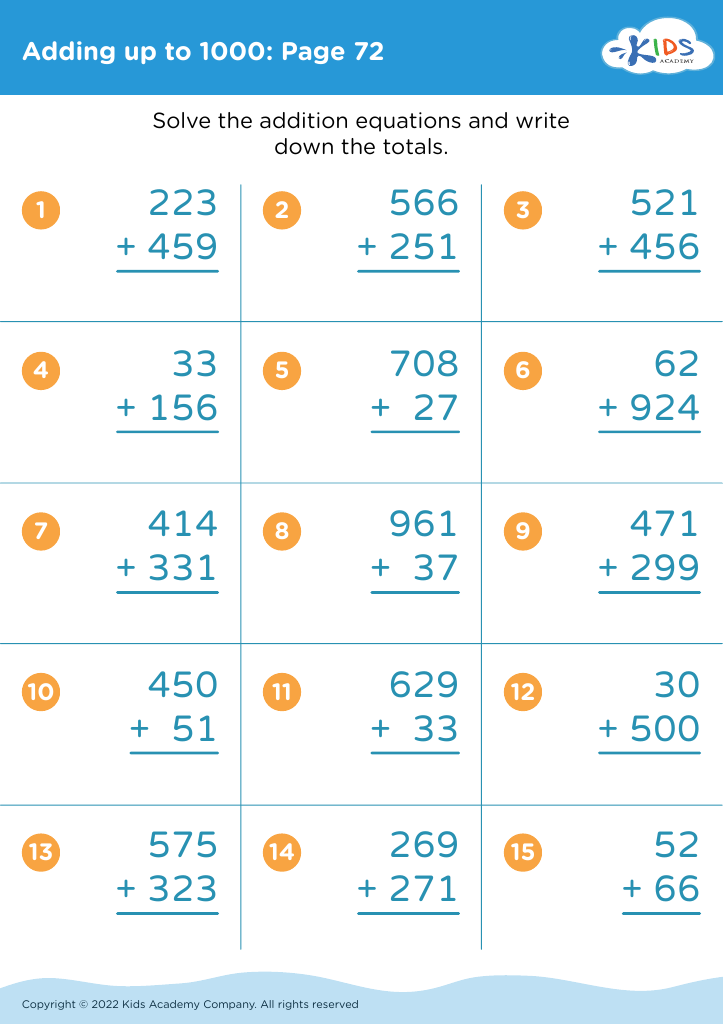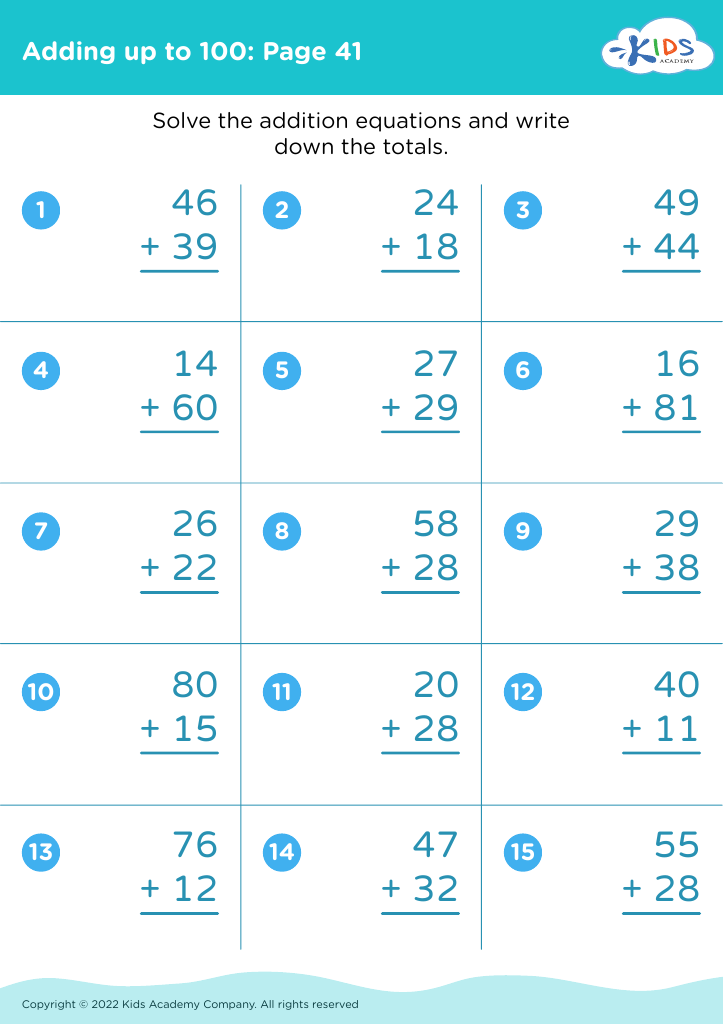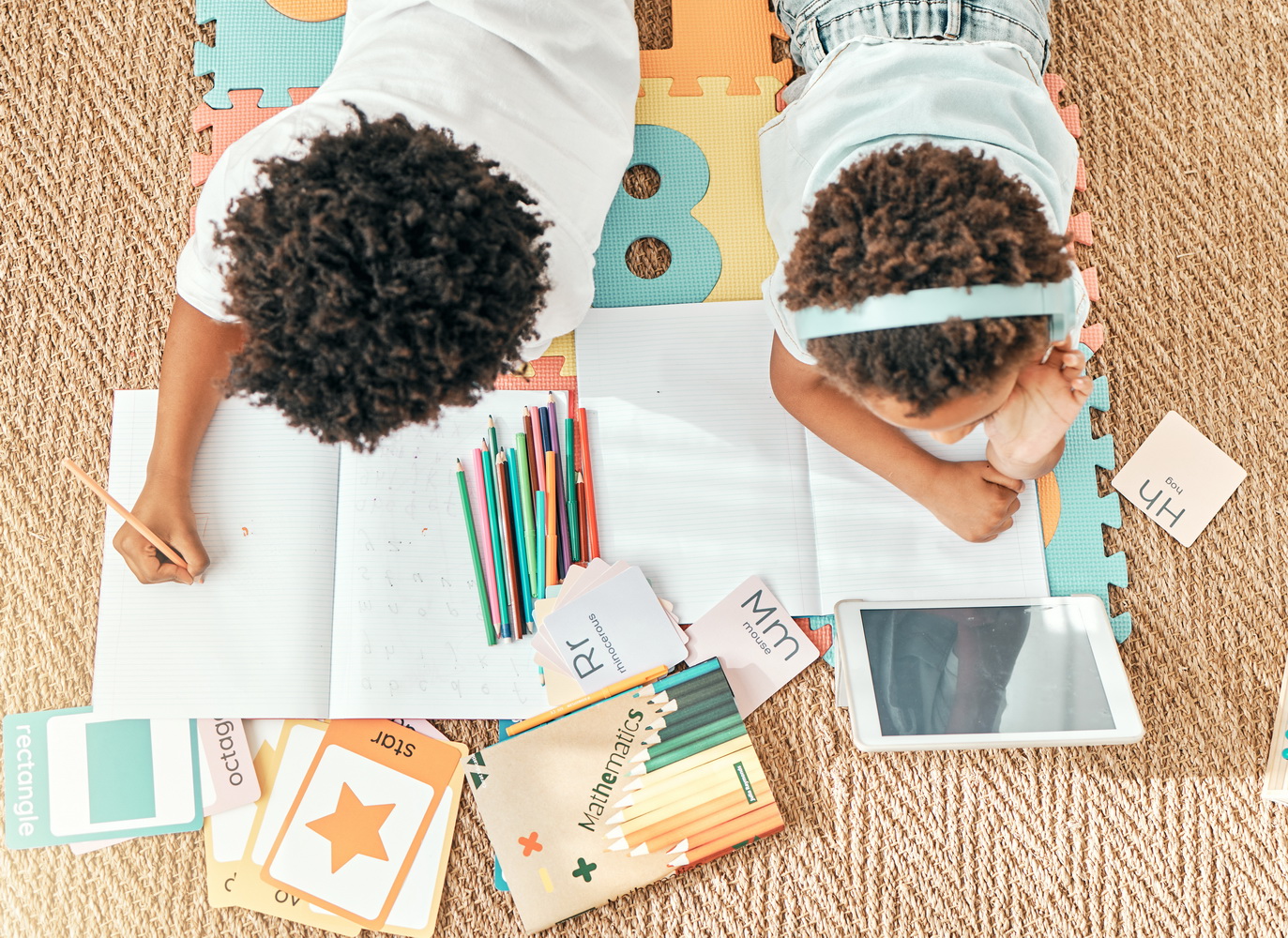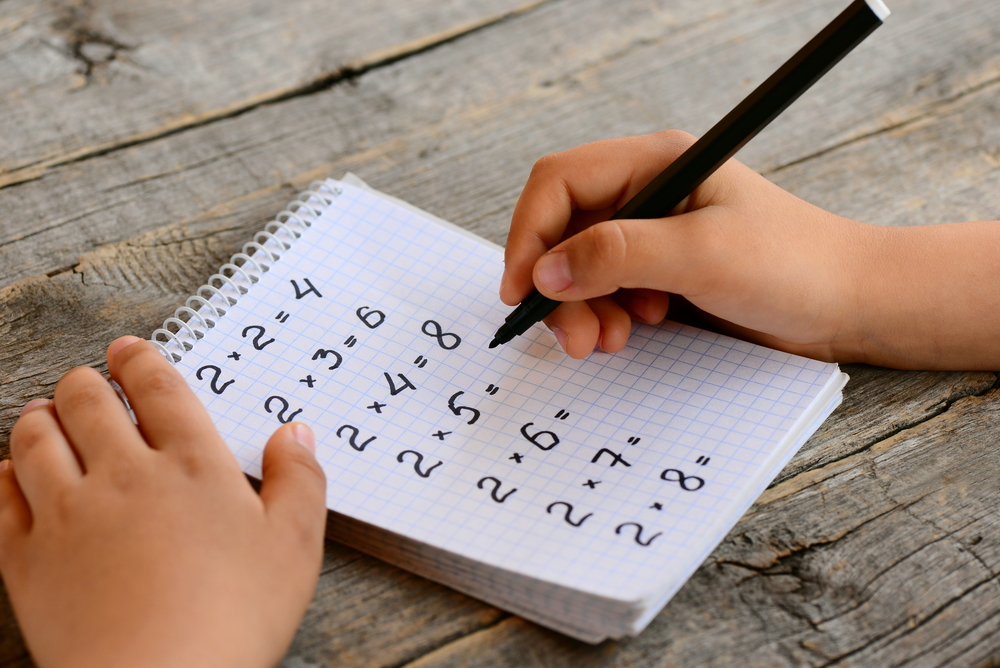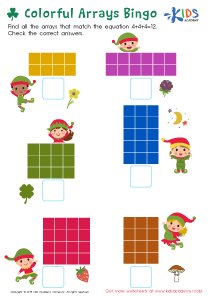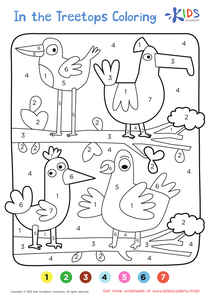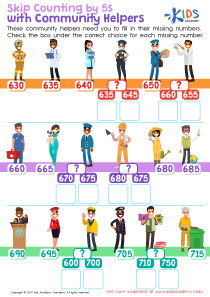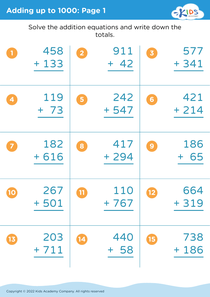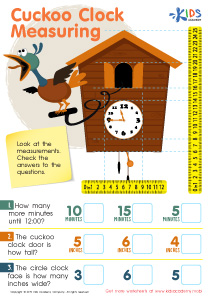Recognizing Patterns Grade 2 Math Worksheets
21 filtered results
-
From - To
Explore our engaging "Recognizing Patterns Grade 2 Math Worksheets" designed to enhance your child's mathematical skills while making learning fun! These worksheets are perfect for second graders, helping them identify and extend patterns using numbers, shapes, and visual prompts. Each activity promotes critical thinking and boosts problem-solving abilities. With various exercises, from simple repeats to complex sequences, kids will develop a solid foundation in recognizing patterns essential for future math success. Ideal for classroom use or at-home practice, our worksheets provide parents and educators with valuable resources to support children's learning journey in math. Start pattern recognition today!
Recognizing patterns in Grade 2 math is crucial for developing young students' mathematical understanding and problem-solving skills. At this stage, children begin to form foundational concepts that will support their learning in more complex areas, such as algebra and number theory. Recognizing patterns helps children see relationships between numbers and draw connections, enhancing their ability to make predictions and solve problems efficiently.
Teachers and parents should prioritize this skill because pattern recognition contributes to students' critical thinking abilities. When children identify patterns, they learn to approach problems systematically and apply logical reasoning, skills that are valuable across subjects and real-life situations.
Furthermore, engaging with patterns encourages creativity and perseverance in students. As they explore various mathematical configurations, they also develop investigative skills and a sense of curiosity about the world around them. Ultimately, fostering an understanding of patterns not only enhances students’ math competencies but also builds their confidence in tackling new challenges. By supporting this aspect of learning, teachers and parents can lay a solid groundwork for future academic success while helping children develop a positive attitude toward mathematics.
